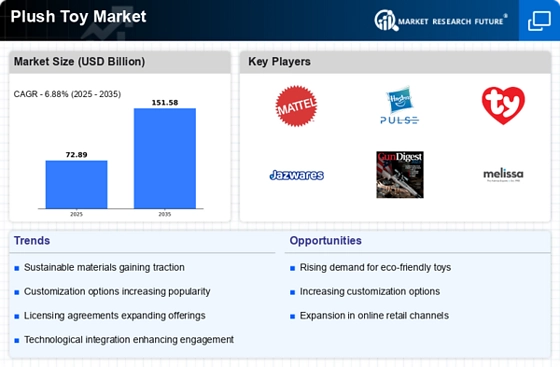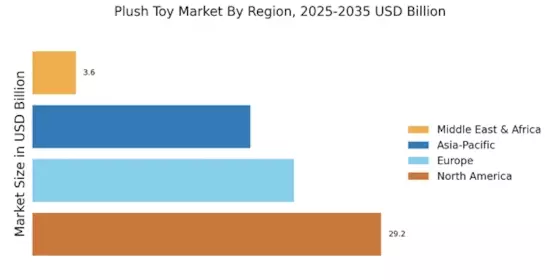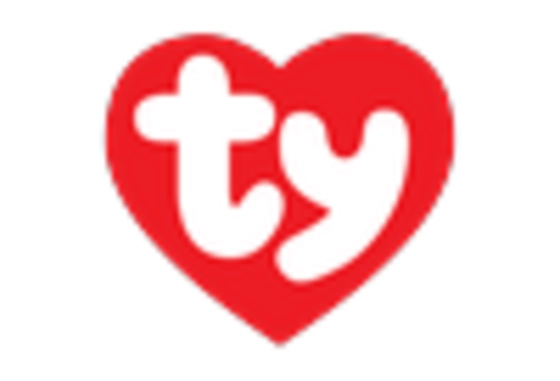Innovative Designs and Themes
The Plush Toy Market is characterized by a continuous evolution of innovative designs and themes that cater to diverse consumer preferences. Manufacturers are increasingly experimenting with unique shapes, sizes, and characters to attract various age groups. Recent trends indicate a rise in themed plush toys, such as those based on popular movies, video games, and cultural phenomena, which have proven to be particularly successful. This innovation not only captures consumer interest but also encourages repeat purchases as collectors seek to complete their sets. As a result, the emphasis on creativity and thematic relevance is likely to drive growth within the Plush Toy Market, fostering a dynamic and competitive landscape.
Growing Demand for Collectibles
The Plush Toy Market experiences a notable surge in demand for collectible plush toys, driven by consumer interest in unique and limited-edition items. This trend appears to be particularly pronounced among adult collectors, who often seek plush toys that evoke nostalgia or represent specific franchises. According to recent data, the collectible plush segment has shown a growth rate of approximately 8% annually, indicating a robust market potential. Retailers are increasingly catering to this demographic by offering exclusive releases and collaborations with popular brands. This growing demand for collectibles not only enhances the overall market size but also encourages manufacturers to innovate and diversify their product offerings, thereby enriching the Plush Toy Market.
Expansion of E-commerce Channels
The Plush Toy Market is witnessing a significant transformation due to the expansion of e-commerce channels. Online retailing has become a primary avenue for consumers to purchase plush toys, offering convenience and a wider selection. Recent data indicates that e-commerce sales in the plush toy sector have increased by over 25% in the past year, reflecting changing consumer preferences. This shift towards online shopping is further supported by advancements in technology, such as augmented reality, which allows consumers to visualize products before purchase. As a result, manufacturers and retailers are investing in their online platforms to enhance user experience and streamline the purchasing process, thereby capitalizing on the growing trend within the Plush Toy Market.
Rising Awareness of Emotional Benefits
The Plush Toy Market is increasingly recognized for its emotional benefits, particularly among children and adults alike. Plush toys are often associated with comfort, companionship, and emotional support, which has led to a growing acceptance of their role in mental well-being. Recent studies suggest that plush toys can help reduce anxiety and promote relaxation, making them appealing to a broader audience. This awareness is driving demand, as consumers seek products that provide not only entertainment but also emotional solace. Consequently, manufacturers are focusing on creating plush toys that resonate with consumers' emotional needs, thereby enhancing their appeal within the Plush Toy Market.
Influence of Social Media and Online Communities
The Plush Toy Market is significantly influenced by social media platforms and online communities, where enthusiasts share their collections and experiences. This digital engagement fosters a sense of community among consumers, leading to increased visibility and interest in plush toys. Platforms such as Instagram and TikTok have become vital marketing tools, with influencers showcasing plush toys in creative ways. Recent statistics suggest that social media-driven sales account for nearly 30% of total plush toy sales, highlighting the importance of online presence. As consumers increasingly rely on social media for purchasing decisions, brands within the Plush Toy Market are adapting their marketing strategies to leverage these platforms, thus enhancing their reach and engagement.


















Leave a Comment